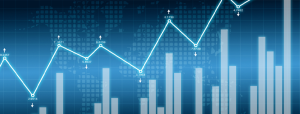
2024 European Innovation Score board Released
2024 European Innovation Score board Released Marie LatourSettings The European Commission released the Innovation Scoreboard 2024 on July 8, offering an in-depth comparative analysis of
What will the earth be like in 2048? Lately we have heard many times this question about what our planet will be like in the future. But are we aware of the environmental problems we are generating and the consequences that this model may bring? The scientific community warns us that, if we continue with the same patterns of consumption and growth as up to now, there is a time limit, in the year 2050, before society collapses and destabilization occurs on a planetary level. Are we still in time to change the destiny of our planet?
The current linear economic model, based on the extraction of raw materials to produce goods that we use, consume and discard, is clearly unsustainable over time. The natural resources critical to guarantee our life and evolution are running out or are on the verge of running out. The scientific community, and especially the geologists’ guild, postulate the Anthropocene as a new geological epoch, which would replace the current epoch, Holocene, due to the global impact that human activities are having on terrestrial ecosystems. In this sense, the rocks called plastiglomerates, formed by an amalgam of plastics, sand, rocks and human waste, will constitute in the future one of the most solid traces of the passage of human beings on the planet.
Moreover, as if this were not enough, our economy, based on the consumption of fossil fuels that emit greenhouse gases, is contributing, as is already known, to the warming of the first atmospheric layer. Scientific evidence indicates that we have already warmed the planet by one degree and that if we continue with this pattern we will reach 2ºC by 2050. According to the United Nations climate change, we currently emit around 51 billion CO2 annually, of which approximately 30% comes from how we make things, process and manufacture them, 27% comes from the way we generate energy and 16% from the way we use it. Based on these data, logic tells us that, if we bet on the design of actions aimed at our way of producing, generating energy or moving, we would be able to minimize a very important part of these emissions, we are talking about up to 75%. However, is there time to achieve this?
The estimate made by the scientific community is that, in the most optimistic scenario, we currently have 29 years to define, develop and implement an energy, industrial and social transition that guarantees the habitability of our planet. In this context, we have the priority mission of collaborating in the greatest integral transformation that we have had to face in the history of humanity. The countdown is on.
Aspects as important as the reduction in consumption, the promotion of recovery and recycling and the recovery of existing resources in waste are a priority within the environmental framework programs at European level. In addition, it is essential that we all work together to address this worrying situation: the scientific community, for its part, betting on Ecodesign, where the analysis of the materials-resources to be used, their destination and their impact on the environment at the end of their useful life is the cornerstone of production systems and service provision; from the administration, outlining public policies and initiatives that promote sustainability; as citizens, being prescribers of the best solutions towards sustainability; and, from the business environment, proposing business models from the permanent perspective of the Circular Economy.
It is an economic concept closely linked to sustainability, which aims to maintain the value of products, materials and resources in the economy for as long as possible, thus minimizing waste generation. The idea arises from imitating nature, where everything has value and everything is used, so that waste becomes a new resource, achieving a balance between growth and sustainability. It pursues the principle of closing the life cycle of products, services, waste, materials, water and energy, optimizing the consumption of raw materials, the use of waste, recycling them or giving them a new life to turn them into new products. Following this concept, design is considered the most important stage of the Circular Economy philosophy, since it is at this stage that the good or bad choices of a product are made: the selection of recyclable materials, the ease of disassembly/repair, etc. Ecodesign reduces the environmental impact of a product to very significant figures.
According to the Ellen McArthur Foundation, the Circular Economy is governed by a series of principles of action among which are:
On the other hand, when the product in question can no longer be used, its components can be remanufactured, and parts that cannot be remanufactured can be broken down into their constituent materials and thus recycled.
This concept is of such magnitude that the European Union has included the promotion of the Circular Economy as one of the main axes of its economic and environmental policy. Likewise, within the framework of the Next Generation Funds, Spain has already presented the Recovery, Transformation and Resilience Plan (PERTE) for the Circular Economy, which is expected to be approved before the end of 2022 and through which it seeks to accelerate more efficient and sustainable production models in the use of raw materials under the paradigm of the Circular Economy, promoting the transition from the linear model to the circular one.
Other European programs that focus on the Circular Economy are also noteworthy, linked to the European Green Pact that seeks to achieve climate neutrality by 2050. Specifically, at the end of November 2022, the publication of the work programs within the framework of the Horizon Europe R&D&I program is planned, in which specific topics aligned with the Circular Economy will be proposed. We can also highlight other European programs such as LIFE or Innovation Fund, which promote projects focused on the reuse and recovery of waste in order to reduce environmental impact.
As if this were not enough, another positive aspect of the Circular Economy is its potential for job creation: The implementation of this model is estimated to create some 700,000 jobs in Europe, of which at least 10% could be generated in Spain. In addition to favoring these employment niches, this strategy would alleviate the dependence of the Spanish economy on foreign countries, especially in these times of uncertainty about the availability of raw materials worldwide.
In Euro-Funding we accompany our clients throughout the process of implementing energy efficiency measures and the development of actions that reduce the environmental impact through the development of services adapted to the needs and legal obligation.

2024 European Innovation Score board Released Marie LatourSettings The European Commission released the Innovation Scoreboard 2024 on July 8, offering an in-depth comparative analysis of

Strategic partnership with CleanTech Business Club Marie LatourSettings Joins Forces to Propel Sustainable Innovation On the occasion of its 10th anniversary celebrated in Munich on

2024 European Calls for Environmental and Climate Projects Asier PollánSettings WHAT IS THE PURPOSE OF THIS PROGRAMME? The 2024 LIFE calls for proposals opened on
